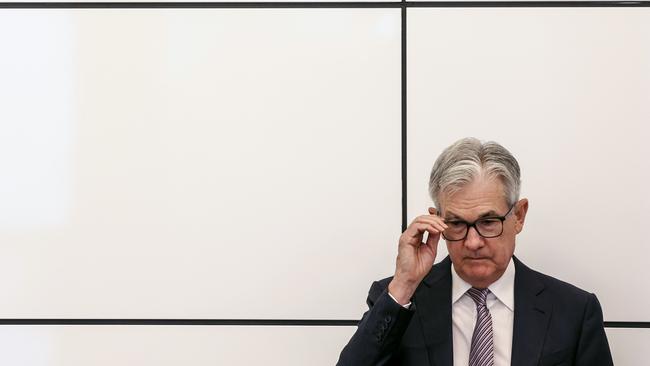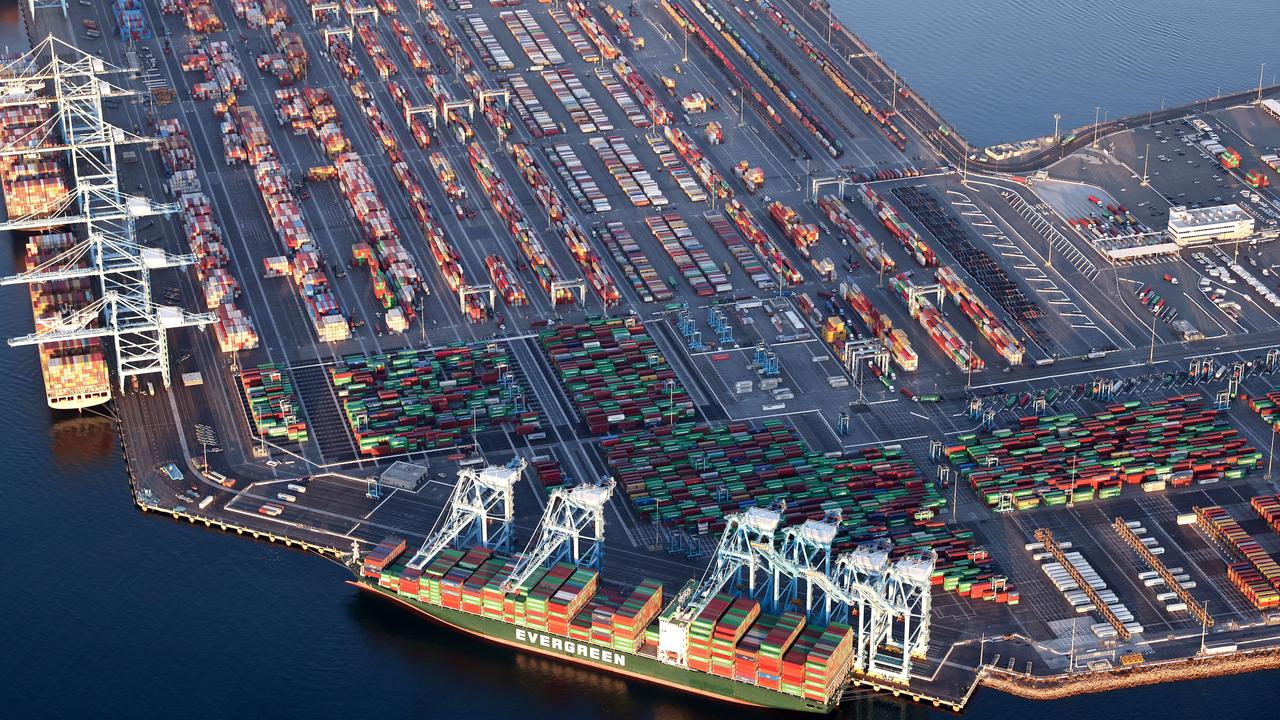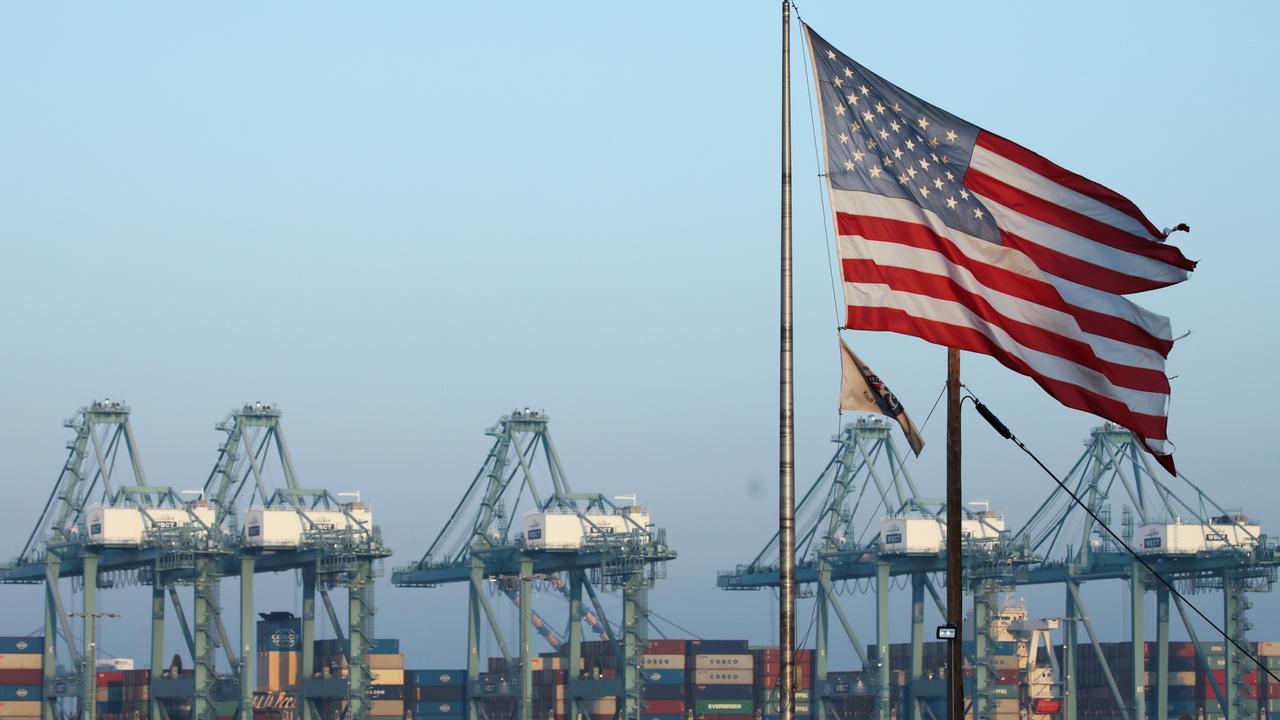All eyes on US Federal Reserve and Jerome Powell as markets take turn for worse
Federal Reserve chair Jerome Powell’s congressional testimony looms as the next test for global risk assets.

Federal Reserve chairman Jerome Powell’s congressional testimony looms as the next test for global risk assets.
Investors will be hoping he softens his tone a bit with the S&P 500 now in a bear market.
After a promising rebound on Tuesday, US markets quickly resumed a risk averse stance ahead of Powell’s Senate appearance overnight.
What started as a slow day deteriorated rapidly as S&P 500 futures fell 1.7 per cent, the Euro Stoxx 50 futures fell 2.1 per cent, West Texas crude oil dived 6.6 per cent to a six-week low of $US103.20 a barrel, and Comex copper dropped 3.6 per cent to a 15-month low of $US3.88 a pound.
Singapore iron ore futures dived 6 per cent to a six-month low of $US106.65 per tonne, the US Treasury yield curve steepened and the Australian dollar fell 1.1 per cent to a three-day low of US68.86c.
Australia’s ASX 200 index fell 0.2 per cent to 6508.5 but closed before the worst of the falls.
Clearly there was a lot riding on Powell’s words.
Even after a rapid tightening of monetary policy, a 150 basis point rise in 10-year Treasury yields and a bear market in the S&P 500, investors are clearly worried that the Fed chief will continue to prioritise fighting inflation over supporting the economy.
In his March testimony, Powell said the Fed still expected inflation to fall this year as supply constraints eased and demand moderated because of the waning effects of fiscal support and the removal of monetary policy accommodation, but added he was “attentive to the risks of potential further upward pressure on inflation expectations and inflation itself from a number of factors”.
“We will use our policy tools as appropriate to prevent higher inflation from becoming entrenched while promoting a sustainable expansion and a strong labour market,” he said in March.
Despite a 150 basis point rise in the Fed funds rate since then and the start of quantitative tightening, Fed board members boosted their inflation estimates at last week’s meeting. US inflation is still expected to peak this year but remain above target through 2024.
Powell is likely to again say that the Fed “will need to be nimble in responding to incoming data and the evolving outlook”.
The Fed chairman is caught between the proverbial rock and a hard place. It’s not clear that he has any wriggle room until the US economic outlook becomes more of a problem than the inflation outlook. Any sign of backing off on rate rises risks fuelling inflation and causing a bigger problem later.
In March he said the Fed “will do everything” it can to achieve “maximum employment and price stability”. The reality is it doesn’t have the luxury of going for maximum employment now.
But Powell may reflect on the fact that by going hard early, the Fed may be in a position to pause before too long. The market now thinks the Fed will be forced to cut rates in 2023 due to recession risks.
It’s also worth noting the high-profile pushback on US recession risks from the likes of Elon Musk, Jamie Dimon, Nouriel Roubini and Larry Summers in recent days.
US President Joe Biden spoke with Summers, a former Treasury secretary, and concluded that a US recession wasn’t “inevitable”.
But Musk said recession was “inevitable at some point” and “more likely than not” in the near term.
Overall, investors know it will be a signal from the Fed that will decide when the market will be able to “look though” the economic slowing and negative impact on earnings, according to Canaccord Genuity chief US equity strategist Tony Dwyer.
The Fed will be constrained by inflation. The question is whether it is prepared to risk causing a bigger bubble by signalling a pause in the months ahead.
“Our core fundamental thesis revolves around money availability, and the Fed’s actions to date have already had a dramatic impact,” Dwyer said.
He is watching “real liquidity” – available money versus what is being used for economic output, measured as growth in the money supply (M2) plus growth in equity and bond mutual funds and ETFs compared to US industrial production growth.
“The drop in M2 plus the financial markets has brought real liquidity to a record low, and further rate hikes are unlikely to help,” Dwyer said. “We have remained on the sidelines except for the nimblest traders despite the historic drop in stocks because the Fed is aggressively raising rates into a levered system with extreme inventory builds and sharply slowing demand with historically weak real liquidity.
“The market is oversold enough for a sharp bounce, but ultimately what gets us off the sidelines other than for a near-term trade is a signalling change from the Fed that allows the market to look through the coming economic slowing and ultimate negative impact on earnings.”







